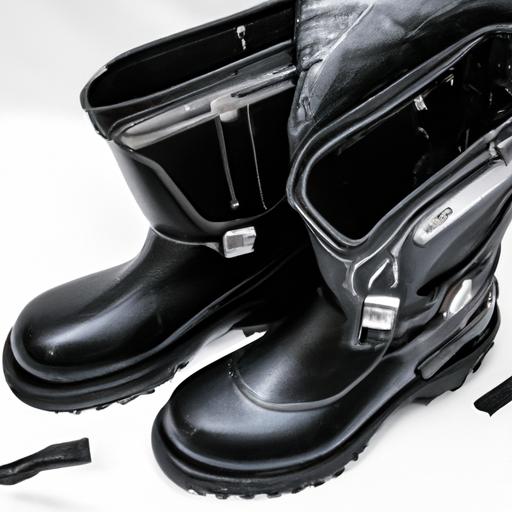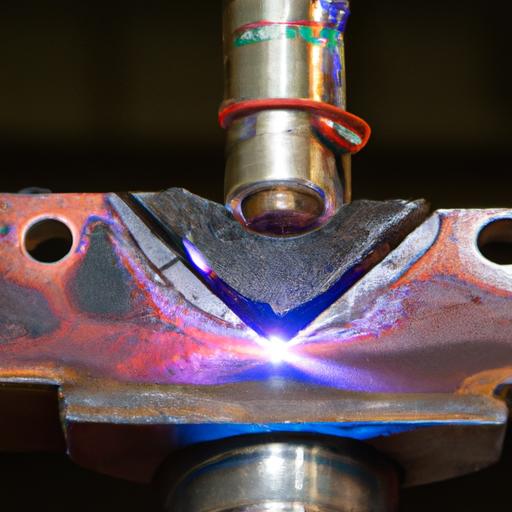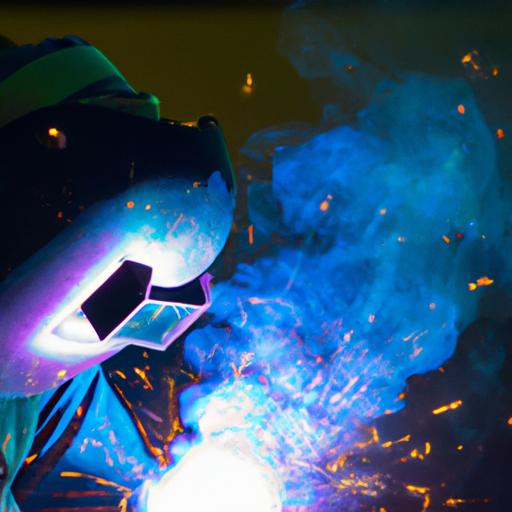Are Welds Better in Tension or Compression?
Welding plays a crucial role in various applications, but have you ever wondered if welds perform better under tension or compression? Understanding the concept of tension and compression forces is vital to grasp the dynamics at play. In this article, I will delve into the importance of welds across different applications and shed light on the differences between tension and compression forces.
When it comes to engineering, tension forces are a common occurrence. These forces act to stretch or elongate a material, exerting a pulling effect. In such scenarios, welds in tension play a pivotal role in withstanding the tensile stresses imposed. A well-executed weld can distribute the load efficiently, ensuring structural integrity. However, the strength of welds in tension is influenced by various factors, including material selection and welding techniques employed.
On the other hand, compression forces are prevalent in structural mechanics. These forces apply a crushing effect, pushing materials together. Welds in compression help handle these compressive loads, providing stability and support. Similar to welds in tension, the effectiveness of welds in compression depends on factors such as material properties and the welding process used.
The question arises: which type of weld is better – tension or compression? Well, it depends on the specific application and the forces acting upon it. Each type of weld has its advantages and disadvantages. To better understand this, let’s delve into a comparison of welds in tension and compression.
Remember, the key lies in selecting the appropriate welds based on the forces at play in a given application. Join me as we explore the factors influencing weld selection and delve into real-life examples showcasing the preference for tension or compression welds. By the end, you’ll have a clearer understanding of whether welds perform better under tension or compression.
Stay tuned for the next section, where we will discuss the factors influencing weld selection.
Welding in Tension
A. Explanation of Tension Forces in Engineering
In the world of engineering, tension forces are a common occurrence. These forces act to stretch or elongate a material, exerting a pulling effect. Imagine a bridge spanning a wide river, with the weight of vehicles and pedestrians causing the bridge to experience tension forces. In this scenario, welds play a vital role in withstanding the tensile stresses imposed.
B. Role of Welds in Withstanding Tensile Stresses
Welds in tension act as a crucial link in ensuring structural integrity. They distribute the load efficiently, preventing the material from succumbing to the pulling forces. When a well-executed weld is subjected to tension, it can resist the stretching effect and maintain the integrity of the joint. This is particularly important in applications where strength and reliability are paramount, such as in aerospace or construction.
C. Factors Affecting the Strength of Welds in Tension
The strength of welds in tension is influenced by various factors that must be carefully considered during the welding process.
1. Material Selection
The choice of materials plays a significant role in determining the strength and effectiveness of welds in tension. Different materials have varying properties, such as tensile strength and ductility, which affect their ability to withstand tension forces. Engineers must consider the compatibility of materials to ensure a strong and reliable weld joint.
2. Welding Techniques
The welding technique employed also impacts the strength of welds in tension. Factors such as the welding process, heat input, and filler material used can affect the integrity and durability of the weld. It is crucial to select the appropriate welding technique and parameters to achieve a robust weld that can withstand tension forces.
Stay tuned for the next section, where we will explore welding in compression and its significance in handling compressive loads.
Comparison of Welds in Tension and Compression
When considering the performance of welds, it is essential to compare their strength and effectiveness in both tension and compression scenarios. Let’s evaluate the characteristics of welds under these different forces and explore the advantages and disadvantages they present.
Evaluating strength and performance in tension and compression
In tension, welds are subjected to forces that tend to pull materials apart. Welds in tension must effectively distribute the load and resist elongation to ensure structural integrity. The strength of welds in tension depends on factors such as the quality of the weld itself, the choice of materials, and the welding techniques employed. Understanding the specific application requirements is crucial in determining the suitability of welds in tension.
In compression, welds face forces that push materials together, exerting a crushing effect. Welds in compression play a critical role in handling such loads and providing stability. The strength and performance of welds in compression depend on factors like the material properties, welding process considerations, and structural design. It is important to consider these aspects when deciding on the most suitable weld for compression forces.
Advantages and disadvantages of welds under different forces
Welds in tension offer several advantages. They can effectively distribute the load, minimize the risk of material failure, and enhance the overall strength of the structure. Additionally, proper welds in tension can withstand dynamic loads and provide flexibility, making them suitable for applications where materials need to be stretched or elongated. However, welds in tension may have limitations in terms of fatigue resistance and susceptibility to stress concentrations.
Welds in compression also have their own set of advantages. They can provide stability, prevent buckling, and handle compressive loads efficiently. Welds in compression are often used to create rigid connections and resist deformations caused by compression forces. However, it’s important to consider factors like material properties and the welding process, as inadequate welds in compression may lead to failure under high loads or sudden impact.
Real-life examples showcasing the preference for tension or compression welds
In real-world applications, the preference for tension or compression welds depends on the nature of the forces involved and the specific requirements of the structure. For example, in a bridge design, tension welds might be more critical in supporting the weight of the bridge deck and withstanding the forces caused by traffic loads. On the other hand, compression welds may be vital in providing stability to the bridge piers, counteracting the vertical compression forces exerted by the weight of the bridge.
By examining such examples, we gain insight into the practical applications and considerations when choosing between tension and compression welds. It becomes evident that the choice is highly dependent on the specific forces and structural requirements at play.
Stay tuned for the next section, where we will discuss the factors influencing weld selection.
Factors Influencing Weld Selection
When it comes to choosing the right type of weld, several factors come into play. It is crucial to consider the specific application requirements to ensure optimal performance. Let’s explore the key factors that influence weld selection in tension or compression scenarios.
A. Importance of considering the specific application requirements
Every application has unique demands, and weld selection should align with those requirements. Factors such as the expected load, environmental conditions, and service life must be carefully evaluated. For instance, if the application involves high tensile forces, welds that excel in tension may be preferred. Conversely, if compression forces dominate, welds designed for compression applications would be the ideal choice.
B. Structural considerations for selecting welds in tension or compression
Structural considerations play a crucial role in weld selection. Understanding the design and load distribution within the structure is essential. The geometry of the joint, the type of materials being joined, and the anticipated stress concentrations should be taken into account. These considerations help determine whether welds in tension or compression are better suited for the structural integrity and overall performance.
C. Cost and feasibility aspects affecting weld choice
Apart from performance considerations, cost and feasibility play a significant role in weld selection. The availability and cost of materials, as well as the complexity and cost of the welding process, should be evaluated. Balancing the desired performance with practicality is essential to ensure cost-effectiveness and feasibility.
By carefully considering these factors, engineers and fabricators can make informed decisions about weld selection in tension or compression scenarios. It’s crucial to strike a balance between the application requirements, structural considerations, and cost feasibility to achieve the desired outcomes.
In the next section, we will conclude our discussion by summarizing the key points and emphasizing the importance of determining the appropriate welds for tension or compression forces.
Conclusion
In conclusion, determining whether welds are better in tension or compression depends on the specific application and the forces at play. Welding plays a critical role in various industries and applications, providing structural integrity and support. Understanding tension and compression forces is vital to comprehend the performance of welds.
Welds in tension are crucial in withstanding pulling or stretching forces. A well-executed weld can efficiently distribute the load, ensuring structural integrity. Factors such as material selection and welding techniques significantly impact the strength of welds in tension.
Similarly, welds in compression handle crushing or pushing forces, providing stability and support. Material properties and the welding process are critical factors in determining the effectiveness of welds in compression.
It is important to select the appropriate welds based on the specific application requirements. Structural considerations, cost, and feasibility aspects all play a role in weld selection. By carefully evaluating these factors, engineers and professionals can make informed decisions regarding tension or compression welds.
Real-life examples showcase the preference for either tension or compression welds in various applications. From bridges and buildings to automotive and aerospace industries, welds are tailored to handle specific forces and ensure safety and longevity.
As advancements continue in welding techniques and materials, the optimization of welds for tension or compression forces will further improve. The key takeaway is that there is no one-size-fits-all answer to whether welds are better in tension or compression. Each application requires careful consideration and evaluation of the forces involved to determine the most suitable weld type.
Thank you for joining me on this exploration of welds in tension or compression. I hope this article has shed light on this intriguing topic and provided valuable insights for engineers, professionals, and enthusiasts alike.



